by Blake O’Connor
Much to my excitement, angst, and disbelief, the culmination of a nearly seven month project had arrived. Among the chaos of shuffling students dressed as Dr. Seuss characters, construction paper, and books, I stopped my frantic running around at the sound of bus airbrakes and 250 second graders chatting and giggling as they marched to the gates of the Freedom High School (FHS) football stadium. They were here. In full suit, our varsity cheerleaders distributed notepads for students to write down new words, and stickers of Dr. Seuss characters. Orderly, they were escorted out onto the field by members of the FHS chapter of the National Junior Reserve Officer Training Corps, where each student found an enthusiastic Student Government officer whose costume and sign matched that of their sticker. Teachers followed closely behind as the FHS students led their groups to a Rhyme Time obstacle course, read-aloud “No Dragons for Tea”, sight word games, and other literacy-related exercises facilitated by members of Café Freedom, the leadership team behind the entire celebration. Everyone who had been a part of it was there – students, teachers, and administrators -between the bleachers, bringing the “I Feel the Need to Read” literacy project to a smashing close. Originating as an idea to put books in the hands of second graders and instill a love of reading, the project galvanized an entire school community.
While education has always been a personal priority, only after my participation in the Bezos Scholars Program (BSP) did I realize the extent to which education has shaped my values, identity, and aspirations. As part of BSP – a leadership development program for 30 top public high school students and exceptional educators from across the U.S. and Africa – we attended the Aspen Ideas Festival, where we participated in sessions and had small group meetings with change-makers from around the world. At nearly every session, each speaker connected education to the issue discussed on stage – from poverty to public health. After returning to Florida, I was inspired to improve reading opportunities for a demographic to which I could relate: below-level second grade readers at Title I schools. I had read below level after moving from a low to high performing school district. Fortunately, I was able to catch up because I had access to supportive teachers and parents, and books inside and outside the classroom. Knowing that 35 percent of my district’s students read below grade level upon entering 3rd grade, my assistant principal (a Bezos Educator Scholar) and I began planning the “I Feel the Need to Read” literacy project, which mobilized high school students as reading mentors and promoted literacy education within the community. Since the founding year, four other high schools have been engaged, over 4,000 second graders have been served, and a service-learning course has been launched at FHS.
Leading the I Feel the Need to Read program affirmed my belief that every child has the ability to learn regardless of their background. As every child should be given the opportunity to learn, every team member should be given the opportunity to contribute. The inclusion of students, teachers, and administrators better informed our planning process and created a community of literacy champions that have driven the program over the past four years. This experience I had with inclusion during the course of the project provided me with a foundation to reflect on the importance and see applications of inclusion in learning how to be a good leader.
In college, I’ve identified role models based on their leadership style. What most, if not all, of them have had in common, is a natural tendency to be inclusive in their work. They are aware of those that have a stake and that their ideas matter too. This inclusive approach creates space where diverse people share with and learn from each other. Inclusive leaders leverage diversity to breed innovative thinking as a disruptive force in the status quo. Much to my surprise, inclusive leaders are a dime a dozen. Unlike the instance of “I Feel the Need to Read,” simply including everyone in the process doesn’t guarantee excitement or results. Where there is diversity, there is potential for error, miscommunication, misunderstanding, and conflict. An inclusive leader avoids these obstacles, by creating a work space where people, regardless of background, “seek first to understand, then to be understood.”[1]
A few weeks back, Dr. Vicki Stocking, mentor and summer advisor at the Robertson Scholars Program, helped me differentiate between simply practicing inclusivity and using it as a tool for transformational leadership. She shared that Inclusivity is the first step to creating a space where individuals are confident in their own identity, experience, and strengths, and understand their role in a collective force toward meaningful impact. In the process, inclusive leaders foster a culture of equality, feedback, and transparency within a team.
We are starting to see inclusivity catch on in organizations that prioritize a presence of diversity. However, including a diverse set of people or stakeholders is not the end to which a team should aspire, but instead is a means to integration.
Undeniably, the status quo of our collective educational system is not meeting our own expectations. But, rather than collaborating toward a system better suited for our children and our world, we are pitted against each other, pointing fingers at the other, and siloed by our own initiatives in pursuit of a noble vision. Why not work together? Here’s a call for inclusive leadership in each level of our education system. At the top, we need inclusive leaders integrating researchers, policymakers, and practitioners to share, test, and implement the policies and pedagogies that are best for student learning. In a school, we need inclusive leaders to form communities of students, parents, teachers, and administrators designed for student success. Since A Nation at Risk, we have seen unsatisfactory change. Collectively, we in education know what needs to be done. So, collectively, let’s do it.
The Bezos Scholars Program @ the Aspen Institute is a year-long leadership development program for public high school juniors and educators to put their education into action. It begins with a scholarship to the Aspen Ideas Festival and continues through the following school year when Bezos Scholar teams return home to launch sustainable, Local Ideas Festivals that transform their schools and communities. Learn more: www.bezosfamilyfoundation.org/Scholars, www.facebook.com/BSPAspen, twitter.com/BezosScholars
Blake O’Connor is a senior studying public policy at the University of North Carolina at Chapel Hill. Inspired by his participation in the Bezos Scholars Program, Blake and Educator Scholar, Assistant Principal Rosemary Owens spearheaded the “I Feel the Need to Read” literacy festival at Freedom High School in Tampa, Florida to put books in the hands of Title I second graders and promote reading in the community. Since 2010, four high schools have been engaged and over 4,000 second graders have been served. In college, Blake has solidified a desire to make a positive impact in education as a summer teacher at Sunflower County Freedom Project, in his work with the Roosevelt Institute | Campus Network, and in independent research on social-emotional learning with the Duke School Research Partnership.
[1] Stephen R. Covey, Seven Habits of Highly Effective People








